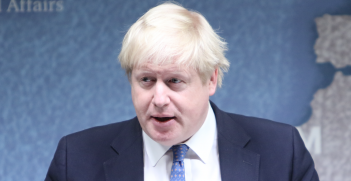Berlusconi, Beppe and the Gordian Knot of Italy's Electoral Reform

After the victory of Silvio Berlusconi’s candidate in last weekend’s Sicilian election, and with prospects of a Berlusconi comeback in the 2018 national poll, it’s time to reconsider the Italian political landscape in the wake of major electoral reform.
After nearly five years of political struggle, the Italian parliament has finally passed the electoral reform required by the High Court that ruled the partial unconstitutionality of the previous version. Italy is now ready to go to the polls in March 2018. The voting system is a mixed proportional/first-past-the-post system and has attracted fierce criticism from the opposition parties (the anti-establishment Five Star Movement and the radical left), not only for its highly convoluted substance, but also because the incumbent government, led by Paolo Gentiloni of the centrist Democratic Party, forced a confidence vote on both houses and threatened to block supply in order to pass the new law.
The right-wing block, including Silvio Berlusconi’s personal party and the xenophobe Northern League led by the ambitious Matteo Salvini (who caught news headlines for his enthusiastic support of Marine Le Pen and Vladimir Putin), also supported the electoral reform, as its hybrid system is expected to favour coalitions over individual parties.
Opinion polls see all three major factions (the Democratic Party’s centrist alliance, the Five Star Movement and the right-wing coalition) hovering at around the 30 per cent mark, with the conservatives slightly in the lead. The left-wing splinter groups running on their own would not quite reach 10 per cent altogether.
Early simulations of the highly convoluted system of proportional seat allocation (accounting for two thirds of the total) show that no single faction is likely to win office outright. With the current starting line-up, there is a high chance that the next Italian parliament will be a hung parliament.
Not even a controversial post-electoral alliance between former prime minister Matteo Renzi’s Democratic Party and Silvio Berlusconi’s Forza Italia is expected to have the numbers for a mercurial ‘Renzusconi’ government, as the two leaders have made no secret of liking each other.
At this point the only option left to avoid a damaging stalemate—akin to the Spanish case in 2016—is a grand coalition between the whole right wing (including the Northern League) and centrist blocks. It is likely that Renzi will once again be frustrated in his ambition to take back the prime ministership, as he is detested by conservative hardliners for his socially progressive agenda on civil unions and citizenship reforms. Not to mention Renzi has also alienated the leftists within and outside of his party for his authoritarian leadership style and neoliberal economic agenda.
Instead, the incumbent Prime Minister Paolo Gentiloni, who proved to be a malleable seat warmer, has better chances to stay in office, but if the Democratic Party suffers a further dive in the polls under Renzi’s polarising leadership, the conservatives will pick his right-wing equivalent, someone like Antonio Tajani, the former Berlusconi staffer and current president of the European parliament. In a situation of protracted gridlock, there could be another election that would open the way for an external solution to be found in some institutional leaders such as Mario Draghi, whose tenure as the European Bank president ends in 2019.
In the meantime, the Five Star Movement’s leadership does not appear too bothered by these prospects and plans to capitalise on the uncertainty over the long term. The Five Star Movement is also positioning itself at home and in European affairs as the herald of direct democracy and the watchdog of constitutional rights under attack by the establishment’s abuses of power. Besides, the charismatic co-founder, Beppe Grillo, is approaching 70 and is gradually loosening his grip, allowing his hand-picked young leaders to emerge,m as the designation of 31-year-old Luigi Di Maio as a candidate for prime minster shows.
The Five Star Movement is thus taking a long view, as this generational transition and executive training may take at least another decade to come to full fruition. In other words, before the Five Star Movement is ready to come of age, it seems that Grillo is content with playing a strong oppositional role nationally and in Europe, while building grassroots support in local governments via instruments of direct democracy. This is very similar to what the Italian Communist Party did from 1946-1993, when it took a stabilising role as the constructive leader of Italian anti-establishment politics in institutions and in civil society. After 1994, Berlusconi aimed to play that role but could never do it because the substance of his politics was unprincipled and over personalised.
After a lost generation for pluralist politics, the Five Start Movement is well positioned to be a Communist Party 2.0 and as such it could offer Italy and possibly the EU a real politics of constructive opposition, which is essential to the preservation and ongoing renewal of pluralistic democracies. After all, the destructive populism of illiberal strongmen tends to spread like weeds in the power vacuum created by political disengagement, which is particularly high when the populace feels stuck in the status quo controlled by impenetrable forces.
It seems unlikely but not entirely impossible that the radical left will unite and then ally with the Five Star Movement, as there is quite an overlap between the two forces in their ecological and anti-globalisation platforms. A grand coalition between the traditional centre and right wing could thus herald a left turn for the Five Star Movement that would evolve its fickle and vague anti-establishment platform into a more substantial form of democratic populism akin to the leftist alliance Unidos Podemos in Spain.
To sum up, the new electoral law is likely to push Renzi’s Democratic Party into a grand coalition with the right. Judging from the recent history of large social democratic parties across Europe, this may prove a deadly embrace for the Italian centre-left. If they can bide their time, the Five Star Movement and the radical left will fill the vacuum in the anti-conservative camp and take Italy back to its post-WWII democratic tradition. After all, “everything must change for things to remain the same”, as Giuseppe Tomasi di Lampedusa famously put in The Leopard.
Dr Giovanni Di Lieto lectures in international trade law in the Bachelor of International Business program at Monash University.
This article is published under a Creative Commons Licence and may be republished with attribution.





